人教版(2019)必修 第二册Unit 2 Wildlife protection Reading for Writing课件(共34张PPT)
文档属性
| 名称 | 人教版(2019)必修 第二册Unit 2 Wildlife protection Reading for Writing课件(共34张PPT) | 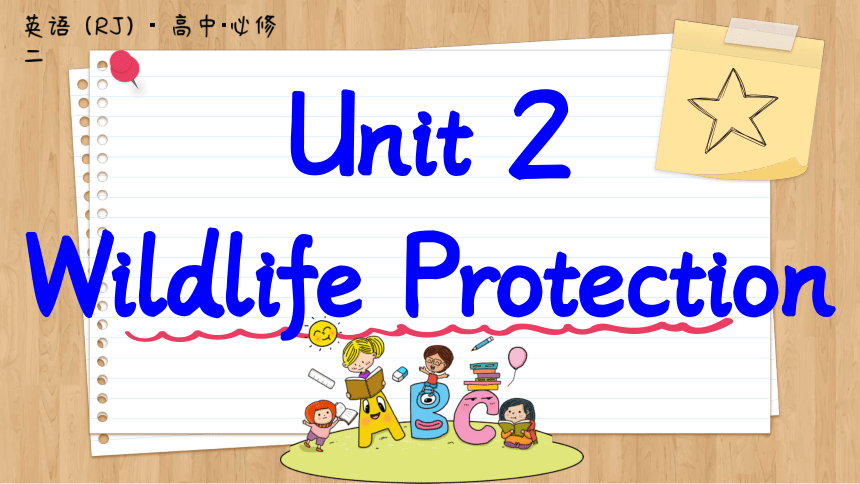 | |
| 格式 | pptx | ||
| 文件大小 | 83.8MB | ||
| 资源类型 | 教案 | ||
| 版本资源 | 人教版(2019) | ||
| 科目 | 英语 | ||
| 更新时间 | 2024-04-17 23:21:05 | ||
图片预览

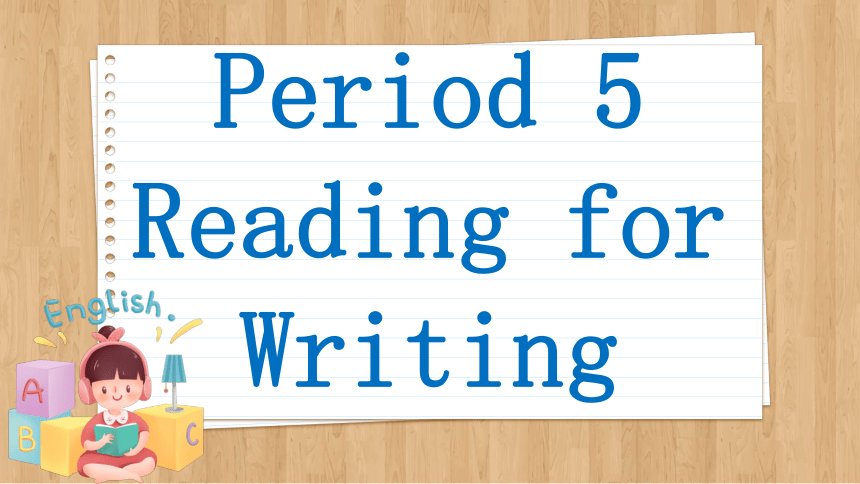

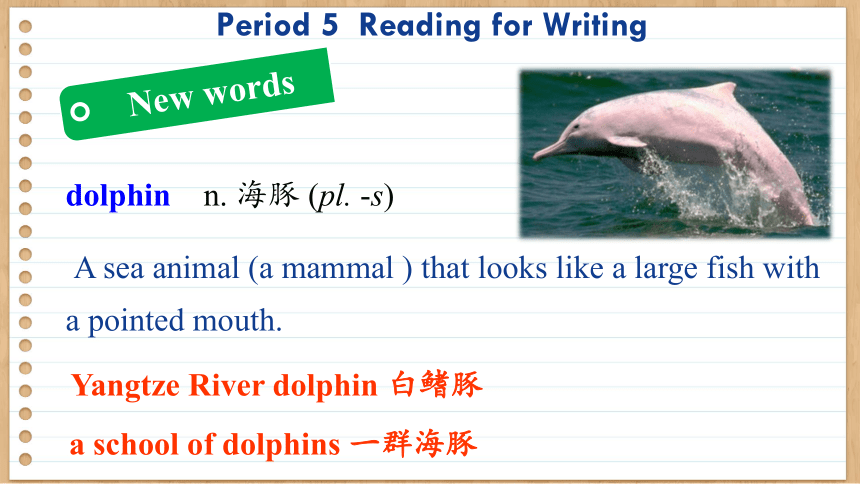
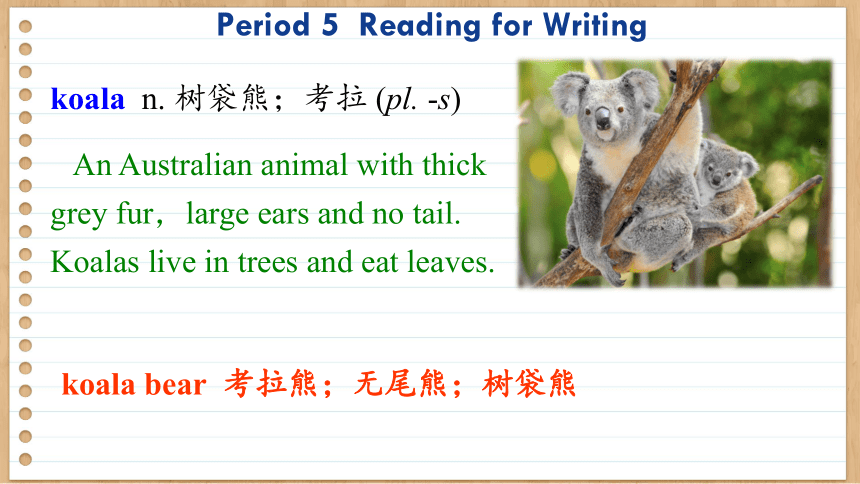
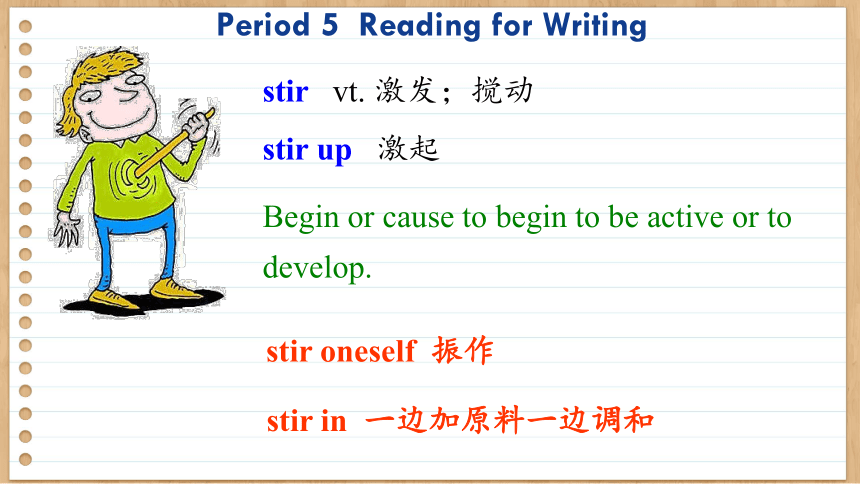

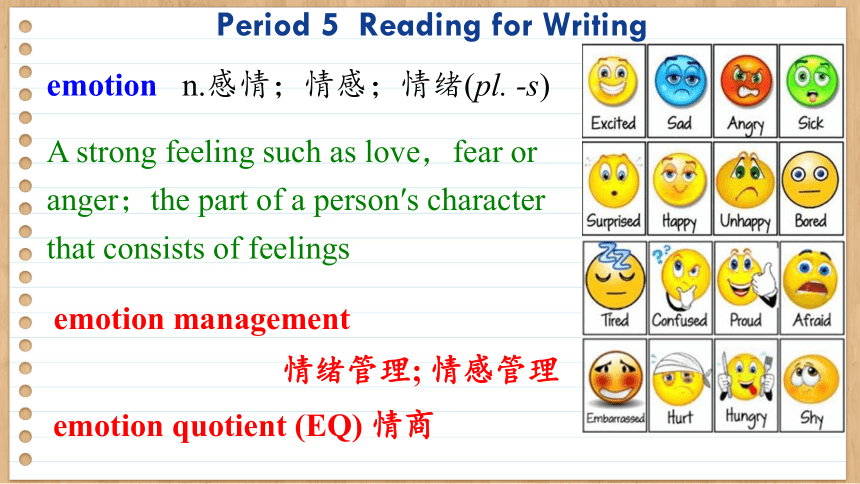



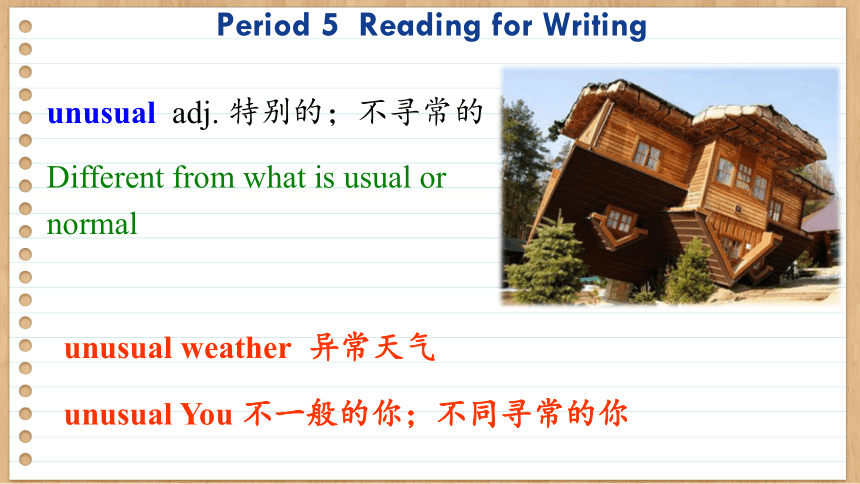
文档简介
(共34张PPT)
Unit 2
Wildlife Protection
Period 5
Reading for Writing
课前自主预习
New words
dolphin n. 海豚 (pl. -s)
A sea animal (a mammal ) that looks like a large fish with a pointed mouth.
Yangtze River dolphin 白鳍豚
a school of dolphins 一群海豚
koala n. 树袋熊;考拉 (pl. -s)
An Australian animal with thick grey fur,large ears and no tail. Koalas live in trees and eat leaves.
koala bear 考拉熊;无尾熊;树袋熊
stir vt. 激发;搅动
stir up 激起
Begin or cause to begin to be active or to develop.
stir oneself 振作
stir in 一边加原料一边调和
Eg. The visual impression could stir up emotions and
thoughts.
视觉印象可以激发情感和思想.
They stir up a lot of emotion,and emotions are very
creative.
他们激起了很多情绪,情绪是非常有创造性的.
emotion n.感情;情感;情绪(pl. -s)
A strong feeling such as love,fear or anger;the part of a person′s character that consists of feelings
emotion management
情绪管理; 情感管理
emotion quotient (EQ) 情商
Eg. Fear is not all of who you are,rather it is an emotion
that you are experiencing.
恐惧不是你的全部,而是你正在经历的一种情绪.
The solution is acceptance—letting the emotion be there.
解决办法就是接受——让情感存在.
skin n.皮;皮肤 (pl. -s)
the layer of tissue that covers the body
skin cancer 皮肤癌
skin color 肤色
Eg. The leopard′s skin is marked with black spots.
豹的皮肤上有黑色的斑点.
If you can see shadows,you need to protect your skin.
如果你能看到阴影,你需要保护你的皮肤.
unusual adj. 特别的;不寻常的
Different from what is usual or normal
unusual weather 异常天气
unusual You 不一般的你;不同寻常的你
Eg. This is an unusual sign.
这是一个不寻常的迹象.
This may indicate something unusual about me,but I rather like math.
这可能表明我有些不同寻常,但我相当喜欢数学.
课文呈现
Make an effective poster
1 Look at the posters below. Which emotions do
the photos communicate
funny surprising frightening sad …
Opinion poster on the left poster on the right
I think it′s ...
Opinion poster on the left
I think it′s ...
I think it′s a little frightening! It doesn′t look friendly and its teeth look sharp!
Opinion poster on the right
I think it′s ...
I think it′s a lovely picture. The koalas are cute. They look soft and gentle.
2 Read the posters and write a one-sentence
summary for each.
When it comes to wildlife protection,all species-the good,the bad,and the ugly-should be treated equally. Pandas,dolphins,and other cute wildlife are important,but we must pay attention to less cute animals,too.
The world needs all kinds-without variety,our planet cannot survive. So if you want the future to be beautiful,you have to give ugly a chance.
“Ugly” animals are just as important as cute animals because nature needs variety to function properly.
Billions of trees are being cutdown every year to make paper for humans. Every tree that is cut down is a part of the habitat of animals such as these koalas. In this way a lot of animal homes are being destroyed! Is it right to make animals homeless so that humans can have more paper
Cutting down trees to make paper destroys the natural habitat of many animals.
3 Look at the posters again. Discuss the questions
in groups.
1 What does each poster use to stir up emotions
The first poster uses an ugly picture of an animal to get a reaction from the reader,but then makes the point that this reaction is part of the problem, because all animals should be protected,not just ones we think are cute.
The ugly rodent is also framed by a Mickey Mouse outline,showing the difference between how we see them in cartoons and how they really are. The second has a cute picture and the headline is written as if the koalas were speaking to the reader which may make them more sympathetic.
2 Who do you think is the intended audience for each poster
Why do you think so
The posters are intended for everyone because they appeal to protecting our planet which we all live on,and to our paper consumption which we all rely on.
3 What does each poster want people to do
How do you know
The first poster wants us to consider “ugly” animals as just as important as cute ones, because it asks us directly to do that. The second wants us to be aware of our paper consumption. It doesn′t tell us to change directly,but it appeals to our emotions to change because what we are doing is not fair to animals like koalas.
4 In your opinion,which poster is more effective Why
I think the “Give Ugly a Chance” poster is more effective,because the viewer will react to the ugly animal first, but then read that this reaction is part of the problem that needs to be dealt with.
4 Work in pairs.
Make a poster about an endangered animal.
1 Choose one of the animals below or one of your own.
Do some research to add to the animal fact sheet.
Why is it endangered
Hunted for its skin and fur
What is being done A plan is being carried out to increase the number of wild tigers.
What can we do
Do not buy fur or other tiger products!
South China Tiger
Yangtze River Dolphin
Why is it endangered
Habitat loss and pollution
What is being done The dolphins are being moved to a clean and safe habitat.
What can we do Clean up the rivers!
2 Follow these steps to organise your poster.
1
Write a title that is simple,interesting,and unusual,and then collect the information you need.
2
Write the name of the species and why it is endangered.
3
Use a powerful image to attract the readers′ attention to the facts and problems.
4
Tell the readers what you want them to think and do.
5 Exchange posters with another pair. Use this
checklist to give them helpful feedback.
Does the poster include key information about the animal
Does the poster explain why it is endangered
Does the poster support its information with facts
Is the message of the poster clear,i.e. can you tell clearly what the designer wants the reader to think or do
Is the image on the poster effective
6 Put the poster in your classroom or in a public
place.
Sample Writing
Protect These Gentle Giants!
The Eastern Lowland gorilla is critically endangered. They are threatened by human activity. They are hunted for their meat.
Their natural habitat is being destroyed by farming,mining, and logging.
There are less than 4,000 left in the wild.
You can help by spreading the word about their plight and supporting charities that work to protect them.
本课结束
This lesson is over
THANKS!
Unit 2
Wildlife Protection
Period 5
Reading for Writing
课前自主预习
New words
dolphin n. 海豚 (pl. -s)
A sea animal (a mammal ) that looks like a large fish with a pointed mouth.
Yangtze River dolphin 白鳍豚
a school of dolphins 一群海豚
koala n. 树袋熊;考拉 (pl. -s)
An Australian animal with thick grey fur,large ears and no tail. Koalas live in trees and eat leaves.
koala bear 考拉熊;无尾熊;树袋熊
stir vt. 激发;搅动
stir up 激起
Begin or cause to begin to be active or to develop.
stir oneself 振作
stir in 一边加原料一边调和
Eg. The visual impression could stir up emotions and
thoughts.
视觉印象可以激发情感和思想.
They stir up a lot of emotion,and emotions are very
creative.
他们激起了很多情绪,情绪是非常有创造性的.
emotion n.感情;情感;情绪(pl. -s)
A strong feeling such as love,fear or anger;the part of a person′s character that consists of feelings
emotion management
情绪管理; 情感管理
emotion quotient (EQ) 情商
Eg. Fear is not all of who you are,rather it is an emotion
that you are experiencing.
恐惧不是你的全部,而是你正在经历的一种情绪.
The solution is acceptance—letting the emotion be there.
解决办法就是接受——让情感存在.
skin n.皮;皮肤 (pl. -s)
the layer of tissue that covers the body
skin cancer 皮肤癌
skin color 肤色
Eg. The leopard′s skin is marked with black spots.
豹的皮肤上有黑色的斑点.
If you can see shadows,you need to protect your skin.
如果你能看到阴影,你需要保护你的皮肤.
unusual adj. 特别的;不寻常的
Different from what is usual or normal
unusual weather 异常天气
unusual You 不一般的你;不同寻常的你
Eg. This is an unusual sign.
这是一个不寻常的迹象.
This may indicate something unusual about me,but I rather like math.
这可能表明我有些不同寻常,但我相当喜欢数学.
课文呈现
Make an effective poster
1 Look at the posters below. Which emotions do
the photos communicate
funny surprising frightening sad …
Opinion poster on the left poster on the right
I think it′s ...
Opinion poster on the left
I think it′s ...
I think it′s a little frightening! It doesn′t look friendly and its teeth look sharp!
Opinion poster on the right
I think it′s ...
I think it′s a lovely picture. The koalas are cute. They look soft and gentle.
2 Read the posters and write a one-sentence
summary for each.
When it comes to wildlife protection,all species-the good,the bad,and the ugly-should be treated equally. Pandas,dolphins,and other cute wildlife are important,but we must pay attention to less cute animals,too.
The world needs all kinds-without variety,our planet cannot survive. So if you want the future to be beautiful,you have to give ugly a chance.
“Ugly” animals are just as important as cute animals because nature needs variety to function properly.
Billions of trees are being cutdown every year to make paper for humans. Every tree that is cut down is a part of the habitat of animals such as these koalas. In this way a lot of animal homes are being destroyed! Is it right to make animals homeless so that humans can have more paper
Cutting down trees to make paper destroys the natural habitat of many animals.
3 Look at the posters again. Discuss the questions
in groups.
1 What does each poster use to stir up emotions
The first poster uses an ugly picture of an animal to get a reaction from the reader,but then makes the point that this reaction is part of the problem, because all animals should be protected,not just ones we think are cute.
The ugly rodent is also framed by a Mickey Mouse outline,showing the difference between how we see them in cartoons and how they really are. The second has a cute picture and the headline is written as if the koalas were speaking to the reader which may make them more sympathetic.
2 Who do you think is the intended audience for each poster
Why do you think so
The posters are intended for everyone because they appeal to protecting our planet which we all live on,and to our paper consumption which we all rely on.
3 What does each poster want people to do
How do you know
The first poster wants us to consider “ugly” animals as just as important as cute ones, because it asks us directly to do that. The second wants us to be aware of our paper consumption. It doesn′t tell us to change directly,but it appeals to our emotions to change because what we are doing is not fair to animals like koalas.
4 In your opinion,which poster is more effective Why
I think the “Give Ugly a Chance” poster is more effective,because the viewer will react to the ugly animal first, but then read that this reaction is part of the problem that needs to be dealt with.
4 Work in pairs.
Make a poster about an endangered animal.
1 Choose one of the animals below or one of your own.
Do some research to add to the animal fact sheet.
Why is it endangered
Hunted for its skin and fur
What is being done A plan is being carried out to increase the number of wild tigers.
What can we do
Do not buy fur or other tiger products!
South China Tiger
Yangtze River Dolphin
Why is it endangered
Habitat loss and pollution
What is being done The dolphins are being moved to a clean and safe habitat.
What can we do Clean up the rivers!
2 Follow these steps to organise your poster.
1
Write a title that is simple,interesting,and unusual,and then collect the information you need.
2
Write the name of the species and why it is endangered.
3
Use a powerful image to attract the readers′ attention to the facts and problems.
4
Tell the readers what you want them to think and do.
5 Exchange posters with another pair. Use this
checklist to give them helpful feedback.
Does the poster include key information about the animal
Does the poster explain why it is endangered
Does the poster support its information with facts
Is the message of the poster clear,i.e. can you tell clearly what the designer wants the reader to think or do
Is the image on the poster effective
6 Put the poster in your classroom or in a public
place.
Sample Writing
Protect These Gentle Giants!
The Eastern Lowland gorilla is critically endangered. They are threatened by human activity. They are hunted for their meat.
Their natural habitat is being destroyed by farming,mining, and logging.
There are less than 4,000 left in the wild.
You can help by spreading the word about their plight and supporting charities that work to protect them.
本课结束
This lesson is over
THANKS!
